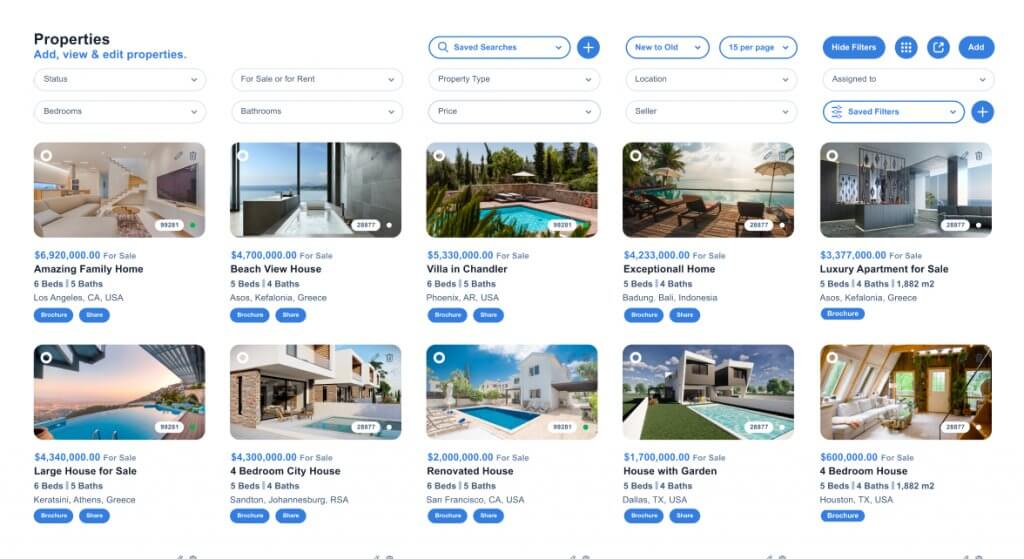As the world becomes more environmentally conscious, sustainable homes have become a key focus in real estate. In recent years, the demand for eco-friendly homes has been steadily increasing as more buyers seek out eco-friendly properties. In this blog post, we will explore the benefits of these homes and provide tips for buyers interested in purchasing an eco-friendly property.
“Climate change is destroying our path to sustainability. Ours is a world of looming challenges and increasingly limited resources. Sustainable development offers the best chance to adjust our course.”
Ban Ki-moon

What are Sustainable Homes?
Sustainable homes are properties that are designed and built with the environment in mind. These homes are constructed using materials that are eco-friendly and energy-efficient, designed to minimize the environmental impact of the property. Sustainable homes typically have a smaller carbon footprint than traditional homes. In addition, they often use renewable energy sources like solar power.
Benefits of Sustainable Homes
Reduced Energy Costs
Sustainable homes are designed to be energy-efficient, meaning that they require less energy to operate than traditional homes. This translates into lower energy bills for homeowners and reduced environmental impact.
Builders can install solar panels on the roof of a property to generate electricity from the sun. This reduces the need for energy from the grid. In addition, they can build these homes with energy-efficient materials and appliances. One example would be insulation that keeps the home cool in the summer and warm in the winter. Another would be high-efficiency HVAC systems that use less energy to heat or cool the home.
Sustainable design is about being more energy-efficient and reducing the amount of energy that’s consumed. When you’re reducing energy consumption, you’re not only saving money, but you’re also reducing the carbon footprint of the home.
Another example of sustainable design that reduces energy costs is passive solar design. Passive solar design uses the natural elements of the sun and the surrounding environment to heat and cool a home. Builders can strategically place windows and design the roof to capture sunlight. This serves to naturally heat a home during the winter months. Additionally, they can use shading devices and ventilation to keep the home cool in the summer.
Passive solar design is a great way to reduce energy consumption and lower energy costs. By using natural elements to heat and cool a home, homeowners can save money and reduce their carbon footprint.
In addition to reducing energy costs, sustainable homes can also increase the overall comfort of the property. Builders design sustainable homes with insulation that keeps them at a comfortable temperature. High-efficiency HVAC systems that provide consistent heating and cooling throughout the home are also used.
Through the use of energy-efficient materials, appliances, and passive solar design, sustainable homes can reduce energy consumption and save homeowners money.
Improved Indoor Air Quality
Sustainable homes are often constructed with materials that are low in harmful chemicals, which can improve indoor air quality. This is especially important for those with allergies or respiratory issues. Traditional homes may contain harmful chemicals such as volatile organic compounds (VOCs) in the paint, adhesives, and other building materials. These chemicals can contribute to poor indoor air quality and can cause respiratory issues, headaches, and other health problems, according to experts who have studied them.
On the other hand, builders design eco-friendly homes with materials that emit fewer harmful chemicals, which can improve indoor air quality. For example, some sustainable homes use low-VOC paints and adhesives. Sustainable flooring materials like bamboo or cork, which are renewable and emit fewer chemicals than traditional flooring materials like carpet, are used.
According to David Riedman, President of Riedman Companies, “We believe sustainable construction practices are the future of our industry. Our customers are becoming more aware of the importance of environmentally conscious building practices and are seeking healthier, more sustainable homes. Improved indoor air quality is just one of the many benefits of sustainable homes.”
Increased Resale Value
Sustainable homes are in high demand, and as such, they often have a higher resale value than traditional homes. This means that homeowners can potentially make a profit on their investment when they sell their property in the future. According to a study conducted by UCLA, sustainable homes sell for an average of 9% more than traditional homes.
This increase in value is due to several factors. Factors like lower energy costs associated with sustainable homes and the increasing demand for eco-friendly housing options. Additionally, builders often construct sustainable homes to higher standards than traditional homes, which can contribute to a higher resale value.
Reduced Carbon Footprint
Sustainable homes are designed to minimize their environmental impact, which can result in a smaller carbon footprint. This is an important consideration for those who want to live a more eco-friendly lifestyle. Sustainable homes achieve this in a variety of ways. Examples would include reducing energy consumption, using renewable energy sources like solar power, and reducing waste.
Reducing energy consumption is one of the primary ways sustainable homes minimize their environmental impact. By using energy-efficient appliances, LED lighting, and other sustainable features, sustainable homes require less energy to operate than traditional homes. This not only reduces energy costs but also helps to reduce the carbon footprint of the property.
Sustainable homes offer a range of benefits beyond just reduced energy costs. They improve indoor air quality, have a higher resale value, and help reduce the homeowner’s carbon footprint. As the demand for eco-friendly housing options continues to grow, these homes are becoming an increasingly attractive option for homebuyers.
Tips for Buying a Sustainable Home
When it comes to purchasing a home, there are several things to keep in mind to ensure that you are making an eco-friendly and cost-effective investment.

Look for Energy-Efficient Features
When shopping for a sustainable home, it’s essential to look for features that will help reduce energy costs and minimize the home’s environmental impact. Energy-efficient windows and doors, insulation, and HVAC systems are all examples of features that can make a significant difference in a home’s energy efficiency.
According to Kari Klaus, CEO of Viva Green Homes, “A home with energy-efficient features can save you thousands of dollars in energy costs over time. When shopping for a sustainable home, look for features that will help you reduce your carbon footprint and save money on energy bills.”

Check the Building Materials
Choosing materials that are eco-friendly make a home sustainable. When shopping for a home, ask the builder or seller about the materials used in the construction. Some examples of sustainable building materials include bamboo flooring, recycled steel framing, and reclaimed wood.
Building materials have a huge impact on the environment. Builders of sustainable homes use materials that recycle, renew, or have a low environmental impact. When shopping for a eco-friendly property, it’s important to look for materials that are eco-friendly and sustainable.

Consider Renewable Energy Sources
Many sustainable homes use renewable energy sources like solar power to reduce their reliance on nonrenewable energy sources. When purchasing a property, consider investing in renewable energy sources like solar panels.
As Steve Nygren, Founder of Serenbe, a sustainable community outside of Atlanta, Georgia, explains, “Renewable energy sources like solar power are a great way to reduce your carbon footprint and save money on energy costs. If you’re interested in purchasing a sustainable home, consider whether or not you want to invest in renewable energy sources like solar panels.”

Look for Green Certifications
Many eco-friendly homes have received certifications from organizations like the Leadership in Energy and Environmental Design (LEED) or the National Green Building Standard (NGBS). These certifications ensure that the home meets certain sustainability standards.
Green certifications like LEED and NGBS ensure that homes meet certain sustainability standards. When shopping for a sustainable property, look for green certifications to ensure that you’re making an eco-friendly and cost-effective investment.
Conclusion
As the demand for sustainable homes continues to rise, eco-friendly homes are becoming a popular option for buyers. With lower energy costs, improved indoor air quality, and a reduced carbon footprint, these properties offer a range of benefits for those looking to live a more eco-friendly lifestyle. By considering energy-efficient features, building materials, renewable energy sources, and green certifications, buyers can find a sustainable home that meets their needs and aligns with their values.




